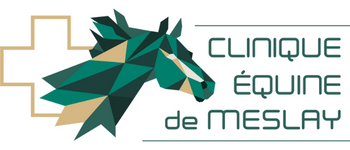Although colic is the most common digestive disorder, the clinic also treats other intestinal infections such as gastric and hepatic infections.
In the case of colic, a disorder that may require life-saving surgery (see surgery) can also be treated before the critical phase. Severe colic often requires, even if not surgically treated, hospitalization for frequent examinations (trans-rectal palpation, naso-esophageal probing), continuous infusions and additional examinations such as abdominal fluid samples, abdominal ultrasound…
The data collected during the following examinations will help refine the diagnosis, the prognosis, and decide whether or not to perform surgery.
- Gastroscopy: Gastroscopy shows the horse’s esophagus and stomach from the inside with the help of an optical fiber. The interest of this examination is to diagnose ulcers, parasites or even sometimes neoplasia. In order to perform this examination, the horse must be fasting. The examination is done on a standing horse.
- Glucose absorption test: this test evaluates the digestion and thus the absorption of food in the intestines. It consists, after having fasted the horse, to administer by nasogastric tube a sugar solution and to take blood at several times in order to evaluate the level of glucose absorbed in the blood. If absorption is inadequate, intestinal disease is suspected and appropriate treatment can be initiated.
- Abdominal ultrasound: With the help of transcutaneous ultrasound, several intra-abdominal organs can be visualized such as the stomach, intestines (small intestine, colon, etc.), liver, kidneys, spleen, etc. It is an essential examination when exploring colic, weight loss or anorexia.
- Transrectal ultrasound: with the help of transrectal ultrasound, certain organs of the digestive tract and the urogenital system can be visualized.
- Transrectal palpation: This is a manual examination that involves feeling the abdominal structures through the wall of the rectum.
- Coprology: It consists of the examination of fecal matter using a microscope. Parasites, bacteria, sand and blood can be detected. This examination can be done in our laboratory at the clinic.
- Pyloric and duodenal biopsies: when a problem with the pylorus (stomach outlet) and duodenum (first part of the small intestines) is suspected, a tissue sample can be taken through the gastroscope. The samples are then analyzed under the microscope (histopathology)
- Rectal biopsies: tissue samples may also be taken during a rectal examination. This gives an idea of the condition of the intestinal mucosa. The samples are then analyzed under the microscope (histopathology).


